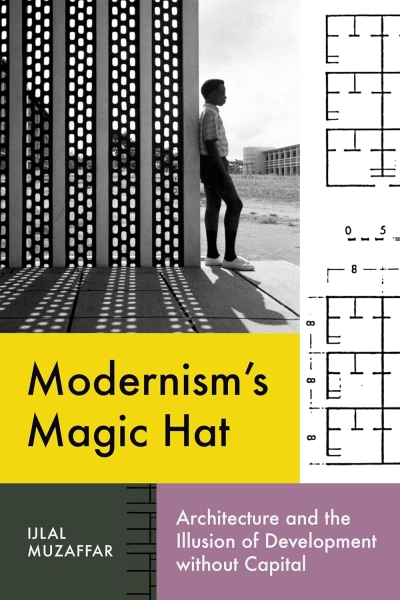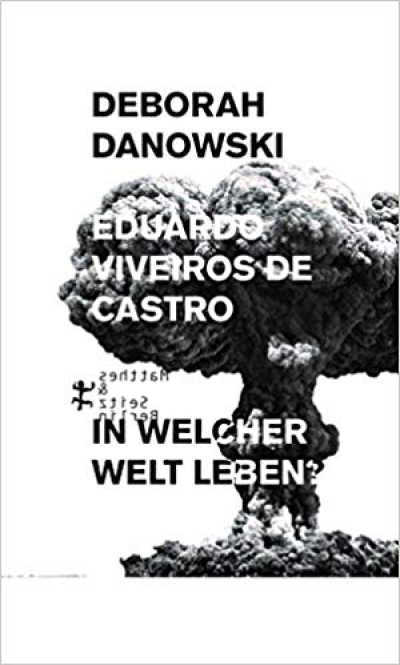Peter Donhauser
Musikmaschinen: Die Geschichte der Elektromusik
gerade nicht auf Lager
Amanda Boetzkes
Plastic Capitalism. Contemporary Art and the Drive to Waste
gerade nicht auf Lager
Stefanie Graefe
Resilienz im Krisenkapitalismus: Wider das Lob der…
Daniel Johnston
Where are the ducks when you need them?
gerade nicht auf Lager
Daniel Birnbaum, Sven-Olov Wallenstein
Spacing Philosophy: Lyotard and the Idea of the Exhibition
Roland Meyer
Operative Porträts. Eine Bildgeschichte der…
gerade nicht auf Lager
A. Juppien, R. Zemp
Vokabular des Zwischenraums: Gestaltungsmöglichkeiten von…
gerade nicht auf Lager
Paul O'Neill, Simon Sheikh, Lucy…
Curating after the Global: Roadmaps for the Present
gerade nicht auf Lager
Maya Vinitsky (Ed.)
Solar Guerrilla: Constructive Responses to Climate Change
gerade nicht auf Lager
Annette Jael Lehmann
Tacit Knowledge. Feminism / Post Studio (Post Studio /…
gerade nicht auf Lager
G. Cachin (Hg.)
Bobst Graphic. 1972 - 1981
gerade nicht auf Lager
H. Bodenschatz, D. Brantz
Grünfrage und Stadtentwicklung. 100 Jahre Groß-Berlin
gerade nicht auf Lager
Christoph Cox
Sonic Flux: Sound, Art, and Metaphysics
gerade nicht auf Lager
Rosi Braidotti, Simone Bignall (eds.)
Posthuman Ecologies. Complexity and Process after Deleuze
gerade nicht auf Lager
T. Garcia, V. Normand (Hg)
Theater, Garden, Bestiary: A Materialist History of…
gerade nicht auf Lager
James Bridle
New Dark Age: Der Sieg der Technologie und das Ende der…
gerade nicht auf Lager
Sabine Breitwieser (Ed.)
E.A.T. - Experiments in Arts and Technology
Richard Buckminster Fuller
R. Buckminster Fuller. Nine Chains to the Moon. An…
Ulrike Bernard
Wuan Wandeln
gerade nicht auf Lager
C. Leonard, L. Khonsary (Hg)
The Halifax Conference. Oct. 5&6 1970
gerade nicht auf Lager
Birgit Rieger, Claudia Wahjudi
Berlin Interviews. 16 Künstlerinnen und Künstler über eine…
Paolo Cirio
Evidentiary Realism. Investigative, Forensic, Documentary…
Robert Kronenburg
This Must Be The Place: An Architectural History of Popular…
gerade nicht auf Lager
Oliver Marchart
Conflictual Aesthetics: Artistic Activism and the Public…
Jürgen Hasse, Sara F. Levin
Betäubte Orte: Erkundungen im Verdeckten
gerade nicht auf Lager
Alexandra Klei
Wie das Bauhaus nach Tel Aviv kam: Re-Konstruktion einer…
Sarah Banet-Weiser
Empowered. Popular Feminism and Popular Misogyny
Stephen Prina
As He Remembered It
Christoforos Savva
Untimely, Again
gerade nicht auf Lager
Barbagallo, Beuret, Harvie (Hg.)
Commoning with George Caffentzis and Silvia Federici
A Prior #20
The Research Issue
gerade nicht auf Lager
Bernard Stiegler
The Age of Disruption: Technology and Madness in…
gerade nicht auf Lager
Edgar Cabanas, Eva Illouz
Manufacturing Happy Citizens: How the Science and Industry…
gerade nicht auf Lager
C. Profanter, H. Andersen, J. Eckhardt…
The Middle Matter. Sound as Interstice
I. Galuzin, G. Severianova (Eds.)
The Withdrawal of the Red Army
gerade nicht auf Lager
IDEA #381
Transboundary Design. Perspective of Yoshihisa Tanaka
gerade nicht auf Lager
Andres Lepik, Daniel Talesnik (Hg)
Access for All. São Paulo's Architectural…
gerade nicht auf Lager
Isabelle Graw, Christoph Menke (eds.)
The Value of Critique: Exploring the Interrelations of…
gerade nicht auf Lager
Bernhard Denkinger
Die vergessenen Alternativen. Strukturalismus und…
P. Bogner, G. Zillner
Frederick Kiesler: Face to Face with the Avant-Garde:…
gerade nicht auf Lager
Jonathan Hill
The Architecture of Ruins: Designs on the Past, Present and…
gerade nicht auf Lager
L. Giusti, N. Ricciardi (Eds.)
Museums at the Post-Digital Turn
gerade nicht auf Lager
IDEA Magazine
IDEA 386. Ministry of Graphic Design Fikra Graphic Design…
gerade nicht auf Lager
Gregor H. Lersch, Léontine Meijer-van…
Mischa Kuball. res.o.nant
gerade nicht auf Lager
Marco Revelli
The New Populism: Democracy Stares into the Abyss
gerade nicht auf Lager
Jacques Ranciere
Aisthesis: Scenes from the Aesthetic Regime of Art
gerade nicht auf Lager
Gean Moreno
In the Mind but Not from There. Real Abstraction and…
gerade nicht auf Lager
Saskia de Wit
Hidden Landscapes. The metropolitan garden as a multi-…
Tchoban Foundation
Deutsche Filmarchitektur 1918–1933 – German Film…
gerade nicht auf Lager
Natascha Süder Happelmann
Ankersentrum (surviving in the ruinous ruin)
HeK (House of Elecronics Basel)
Entangled Realities: Living with Artificial Intelligence /…
gerade nicht auf Lager
Rosi Braidotti
Posthuman Knowledge
gerade nicht auf Lager
Jochen Volz, Gabi Ngcobo (Eds.)
We Are Many. Art, the Political and Multiple Truths
gerade nicht auf Lager
Fitz, Krasny, Architekturzentrum Wien (…
Critical Care. Architecture and Urbanism for a Broken Planet
gerade nicht auf Lager
Anne Kockelkorn, Nina Zschocke (Hg)
Productive Universals. Specific Situations: Clinical…
gerade nicht auf Lager
Elke Neumann
Palast der Republik. Utopie, Inspiration, Politikum
Troy Schaum (Ed.)
Totalization: Speculative Practice in Architectural…
gerade nicht auf Lager
F. Serapiao, G. Wisnik
Infinite Span. 90 Years of Brazilian Architecture
gerade nicht auf Lager
Heike Munder (Ed.)
Producing Futures: A Book on Post-Cyber-Feminisms
gerade nicht auf Lager
L. Giusti, N. Ricciardi (Eds.)
Museums at the Post-Digital Turn
Victor Papanek
Design for the Real World
gerade nicht auf Lager
Andreas, Jung, Schmal (Hg.)
Wohnen für Alle: Bautenkatalog
gerade nicht auf Lager
Elizabeth Resnick
The Social Design Reader
gerade nicht auf Lager
Anca Benera, Arnold Estefan
DEBRISPHERE - Landscape as an Extension of the Military…
gerade nicht auf Lager
Fiona McGovern, Megan Francis Sullivan…
Jill Johnston. The Disintegration of a Critic
gerade nicht auf Lager
Camiel van Winkel
Archive Species: Bodies, Habits, Practices
gerade nicht auf Lager
Ted Hyunhak Yoon
Decoding Dictatorial Statues
Sophie Cure, Aurelien Farina
Graphic Design Play Book: An Exploration of Visual Thinking
gerade nicht auf Lager
Danielle Child
Working Aesthetics: Labour, Art and Capitalism
gerade nicht auf Lager
Katya Garcia-Anton
Sovereign Words. Indigenous Art, Curation and Criticism
gerade nicht auf Lager
Lorraine Daston
Against Nature
gerade nicht auf Lager
Brigitta Gerber, Ulrich Kriese (Hg)
Boden behalten - Stadt gestalten
gerade nicht auf Lager
Dominik Landwehr (Hg.)
Virtual Reality: Edition Digital Culture 6
gerade nicht auf Lager
Thor Magnusson
Sonic Writing: Technologies of Material, Symbolic, and…
Biechteler, Käferstein, Hochschule…
Architekturpädagogiken: Ein Glossar
gerade nicht auf Lager
Haenschel, Nelke, Planitzer (Hg.)
Uncanny Interfaces
Jens Balzer
Pop und Populismus: Über Verantwortung in der Musik
gerade nicht auf Lager
Lisa Baker
Tiny Interiors: Compact Living Spaces
gerade nicht auf Lager
Marvin Heiferman
Seeing Science: How Photography Reveals the Universe
gerade nicht auf Lager
Kristen Alvanson
XYZT
gerade nicht auf Lager
Zdenke Badovinac
Comradeship: Curating, Art, and Politics in Post-Socialist…
gerade nicht auf Lager
Juan Serra Lluch
Color for Architects
2G 78
Junya Ishigami
gerade nicht auf Lager
OASE 102
Schools & Teachers
gerade nicht auf Lager
Geert Lovink
Sad by Design: On Platform Nihilism
gerade nicht auf Lager
Paul Mason
Klare, lichte Zukunft: Eine radikale Verteidigung des…
M. F. Gage (Ed.)
Aesthetics Equals Politics: New Discourses Across Art,…
gerade nicht auf Lager
Ben Green
The Smart Enough City: Putting Technology in Its Place to…
gerade nicht auf Lager
Make_Shift (Hg.)
Make City. Stadt anders machen. A Compendium of Urban…
gerade nicht auf Lager
Lizzie O'Shea
Future Histories: What Ada Lovelace, Tom Paine, and the…
gerade nicht auf Lager
Alex Bykov, Ievgeniia Gubkina
Soviet Modernism. Brutalism. Post-Modernism
gerade nicht auf Lager
Yuk Hui
Recursivity and Contingency
gerade nicht auf Lager
David Bennewith, Sereina Rothenberger (…
Questions? Looking for answers in the middle of somewhere
gerade nicht auf Lager
Eduardo Viveiros de Castro, Deborah…
In welcher Welt leben?: Ein Versuch über die Angst vor dem…
gerade nicht auf Lager
Alina Popa, Florin Flueras
Unsorcery
gerade nicht auf Lager
Goodman, Heys, Ikoniadou (Eds.)
AUDINT. Unsound : Undead
gerade nicht auf Lager
Tabea Nixdorff.
Fehler lesen. Korrektur als Textproduktion
gerade nicht auf Lager
Silvia Federici
Re-enchanting the World: Feminism and the Politics of the…


































































































